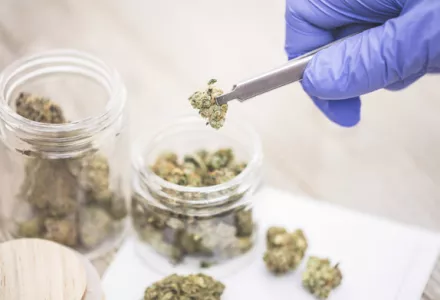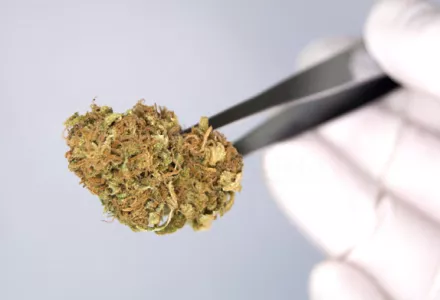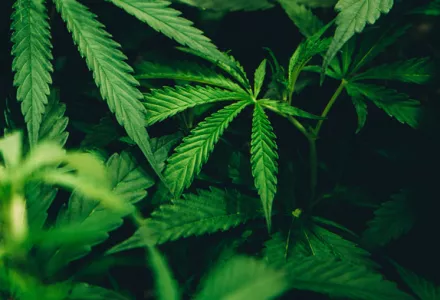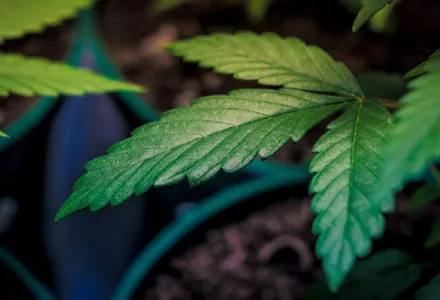In soil, particularly crop soils, a large number of microorganisms live. Some of them grow and develop in the area of the soil that is in contact with the roots of plants, called the rhizosphere. This density of microorganisms is due to the particular physical and chemical characteristics that occur in this area of the soil. For example, roots exude a large number of carbon that favors the development of this type of microorganism. Some do not have any effect on plants, while others are potential pathogens. Similarly, there are many of these inhabitants of the rhizosphere who protect the crop against other harmful pathogens and promote plant growth through various actions.
Due to the existing differences between them and are used to improve crops. Different plant species, the rhizosphere of In this way, products have been developed each of them will have a bioprotective, biostimulant or biofertilising- characteristics to promote the development of special characteristics which serve to stimulate the defenses of one kind or another of microorganisms. For example, plants improve processes such as rooting while the bacteria of the Rhizobium genus only supports the flowering and provides or favours the development in the roots of legumes. the assimilation of certain nutrients.
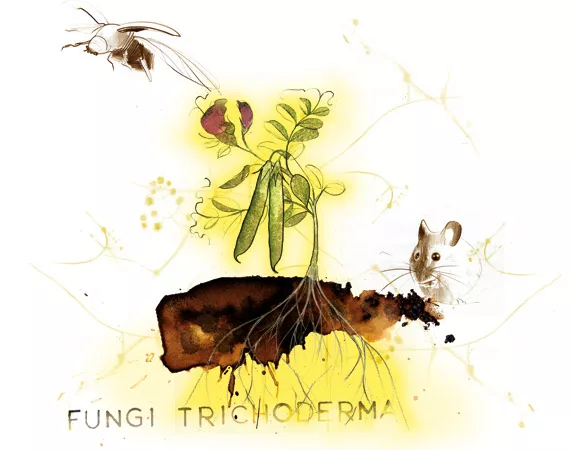
The beneficial properties of these micro-organisms of the rhizosphere. microorganisms on the plants have been these beneficial effects are:
Fungi
Genus Trichoderma
The fungi of the genus Trichoderma live in soils that are rich in organic vegetable matter. These mushrooms are also capable of establishing symbiotic relationships with the roots of the plants that are found growing in those soils.
The benefits provided by these mushrooms have been widely recognized in a multitude of studies. Among them, the most outstanding benefits are:
Induction of plant defense mechanisms Plants, unlike animals, don't have the ability to produce antibodies against those pathogens that penetrate their organism, however, they do produce other types of molecules, especially proteins and phytoale- xines (substances with fungicidal properties and bactericides), which help fight the attack of the pathogen. The plant begins to produce these substances when it detects that an insect is attacking it or when it suffers an injury from some chewing or herbivorous animal. The fungi Trichoderma secrete a series of substances that cause the plant to produce these defense proteins and phytoalexins, though is not being harmed by any parasite.
Many phytopathogenic fungi produce enzymes that break down the cell walls of the the plant they're infecting. The products of decomposition of these cells serve as a sign to the plant that it's being attacked. Trichoderma fungi produce enzymes, especially cellulases, which decompose organic matter (dead roots, remains of other crops, etc.). The products derived from this enzymatic degradation tend to be very similar to the ones that are provoked in the attack of a pathogen to the plant, so they serve as a signal to activate the production of resistance substances.
Microparasitism is the capacity that these fungi have to parasitize and grow on other possible plant pathogens. For example, some species of Trichoderma may be useful to combat and prevent Rhizoctonia solani, a fungus causing damping off and rotting of the root. This property has also resulted in foliar sprayings of Trichoderma to combat fungal diseases such as oidium or mold. This mycoparasitism also stimulates the plant's defenses, as the products of pathogenic fungus degradation are very similar to those that serve as a warning signal to the plant. For example, chitosan is a component of the cell wall of fungi that is not found in plants, and which triggers the production of a number of defense substances. In addition, they favour growth in general of the host plant, improving as well the assimilation of certain nutrients.
Mycorrhizal fungi
Mycorrhizae are fungi that necessarily need to establish a symbiotic relationship with the roots of the plants to be able to develop. Some edible mushrooms, such as the sought-after truffles, are mycorrhizal fungi that have symbiosis with the roots of different species, mainly hazelnut and oak. Depending on the way in which they colonize the roots, they can be classified as endomycorrhiza and ectomycorrhizae. In the case of ectomycorrhizae, the mycel only grows externally, surrounding the root superficially or, at most, penetrating intercellularly in shallow layers.
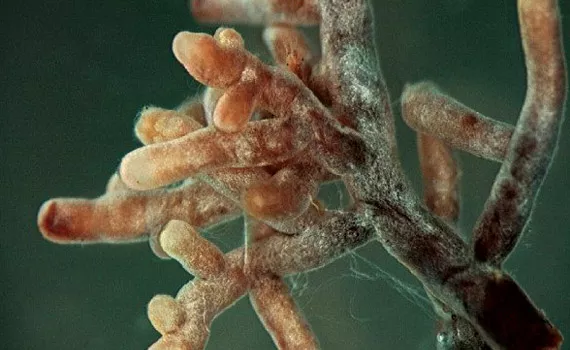
The secondary roots that grow from these colonized roots will grow already wrapped in the mycelium of the fungus. This external mycelium, which extends further than the root, serves the plant to take advantage of the nutrients that are farther away from its root environment. In the case of endomycorrhizae, the colonization involves penetration into the inside of the cells. There are several types of endomycorrhizae, but the most important from the agricultural point of view are the vesicular endomycorrhizae ar- (VAM). Some of these fungi are Glomus, Gigaspora, Acaulospora and Sclerocystis. In the symbiotic relationship the plant provides the fungus with sugars from the photoassimilates, and the mycorrhiza provides nutrients that the plant alone could not or would not assimilate in a very small amount.
Rhizobacteria
Rhizobacteria are bacteria that colonize the roots of the plants and develop within them or in their vicinity. Of all microorganisms present in the rhizosphere, they are the most abundant. The positive effect that these bacteria have on the plants that they colonize has been observed since ancient times; farmers realized that the crops they were cultivating improved when they were produced in a field where leguminous plants had been grown. With the passage of time, various studies have been carried out that have demonstrated the different properties that some of the world's rhizobacteria possess. This type of beneficial bacteria are called "rhizobacteria that promote plant growth" (PGPR).
Atmospheric nitrogen fixation
The rhizobium-leguminous symbiosis is probably the first symbiosis used by humans to increase harvests. In addition, observation shows that those plants which presented better growth and higher output contained protrusions in their roots called "nodules," which are almost non-existent in the other plants.
It was in 1888 that the Germans Hellriegel and Wilfarthel showed that it was in these nodules where nitrogen was produced and accumulated. Subsequently, the Dutch Beijirink isolated the bacteria that were in said nodules. These bacteria belong to the genus Rhizobium, which, through the action of nitrogenous enzymes, transform into atmospheric nitrogen that is not directly usable by the plant in assimilable ammonium. This transformation takes place in the interior of the nodules, which are characterised by a dense pink liquid they contain. It is said that the relationship between Rhizobium and le- guminous is endophytic, as the bacteria are developed inside the host plant.
Another endophytic bacteria that is also nitrogen fixative is Azetobactor diazotrophicus, which develops in the interior of the sugar cane plant, distributing itself through the vascular system. Actinomycetes Frankia also forms nodules with nitrogen-fixing capacity in some trees and shrubs of the Casuarina genus. There are also other atmospheric nitrogen fixative bacteria that colonize the roots of plants which are not leguminous and which, unlike of the genus Rhizobium, are not developed in the inside of the host tissues but in the rhizosphere; this is the case, for example, in bacteria of the genus Azospirillum.
There are other atmospheric nitrogen-fixing bacteria genera that do not develop in the interior of the plants or in the rhizosphere and, therefore, are not considered rhizobacteria, such as those of the Azotobacter genus, which feed on decomposing organic matter in the soil.
Solubilization of phosphorus and iron
Like Trichoderma, there are rhizobacteria that are able to mobilize inorganic phosphorus and iron, which are found in the soil forming insoluble compounds. Some of these bacteria are of the genera Bacillus, Pseudomonas, Rhizobium and Erwinia.
Production of useful active molecules for the plant
Phytohormones and stimulators of the growth. Many of these bacteria produce phytohormones such as natural auxins (indolacetic acid), giberelines or cytokinins, whose presence can improve processes of germination or rooting. A fungus that produces large quantities of auxins is Azospirillum sp.
Elicitators of defensive responses in the plant
These rhizobacteria don't make the plant produce phytoalexins or resistance proteins, but enhance their production in case it is attacked by some phytopathogen.
They enhance the symbiosis of the root with other fungi and rhizobacteria
Although PGPRs produce substances that impede the development of some microorganisms of the soil, sometimes they enable their symbiosis. This is the case of the endomycorrhiza Glomus and the PGPR Bacillus subtilis. They have an inhibiting effect on other pathogenic microorganisms.
Use as biological control agents
Production of antibiotics. This quality makes these bacteria suitable candidates for preventing root rot such as damping off and even to combat aerial fungi such as the Botrytis. Many rhizobacteria are producers of this type of antibiotics, some with fungicidal or antiviral properties. The main rizobacteria that produce this type of antibiotics are those of the genus Pseudomona and Bacillus. Some antibiotics such as Mupirocin produced by P. fluorescens are widely used in medicine.
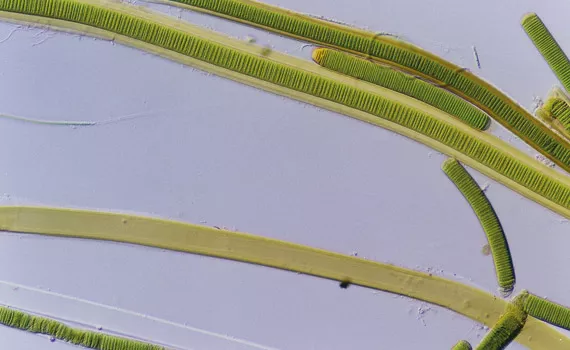
Cyanobacteria
Cyanobacteria are photosynthetic bacteria. Some form symbiosis with other plants like, for example, the Anabaena azollae bacteria that are symbiotic with the aquatic fern Azolla. These bacteria are characterized by being atmospheric nitrogen-fixing and for providing different substances like phytohormones. The nitrogen fixed by the fern-bacteria symbiosis has been widely used to fertilize fields of rice, where, prior to sowing, this fern was cultivated. As such, the rice grows and the fern dies, the accumulated nitrogen is released and later taken advantage of by the cultivated plant.








